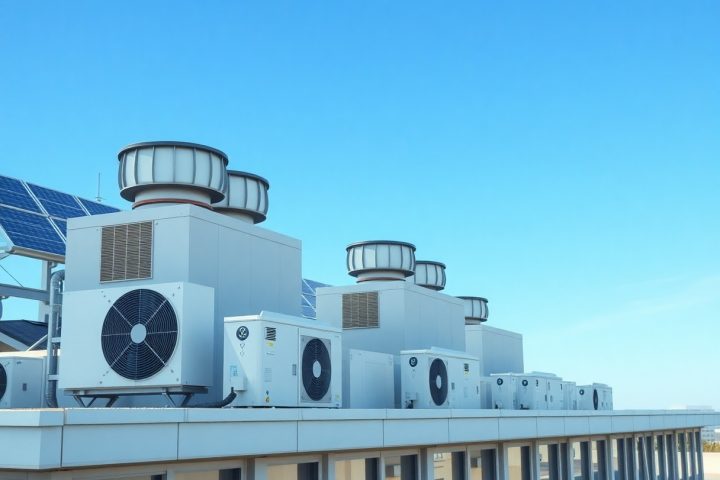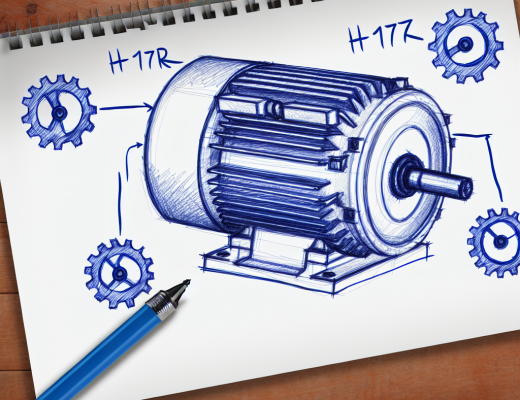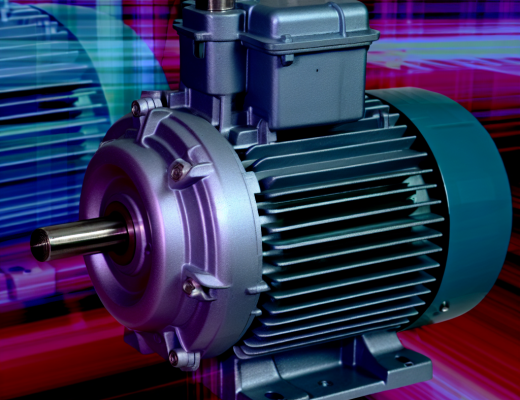Most homeowners are seeking sustainable solutions for cooling their living spaces, and solar cooling presents a compelling option. By harnessing the sun’s energy, you can significantly reduce your reliance on traditional cooling systems and lower your energy bills. In this blog post, you’ll discover how solar cooling technologies operate, the different methods available, and how you can implement these systems in your home to enhance comfort while promoting environmental sustainability.
Overview of Solar Cooling Systems
As global temperatures rise, solar cooling systems offer an innovative and sustainable alternative for climate control. These systems harness solar energy to provide efficient cooling solutions for residential and commercial spaces. By converting sunlight into usable energy, solar cooling not only reduces electricity costs but also minimizes environmental impact, resulting in a greener approach to temperature regulation.
Types of Solar Cooling Technologies
Types of solar cooling technologies can be broadly categorized into different methods:
- Solar Thermal Cooling
- Photovoltaic-Powered Air Conditioning
- Desiccant Cooling Systems
- Absorption Chillers
- Evaporative Cooling Systems
Any one of these technologies can be tailored to meet your specific cooling needs and geographical requirements.
| Solar Thermal Cooling | Utilizes solar collectors to generate thermal energy for cooling. |
| Photovoltaic-Powered AC | Combines solar panels with conventional air conditioning units. |
| Desiccant Cooling Systems | Uses desiccants to absorb moisture, cooling the air efficiently. |
| Absorption Chillers | Employs heat-based refrigeration for air conditioning without electricity. |
| Evaporative Cooling Systems | Utilizes water evaporation to cool incoming air, ideal for dry climates. |
Key Components of Solar Cooling Systems
Between various solar cooling systems, several key components play a significant role in ensuring efficient operation. These components work together to capture, convert, and utilize solar energy effectively to provide cooling solutions.
Cooling systems typically comprise solar collectors, which capture sunlight, a heat transfer fluid that transports heat, a cooling mechanism such as an absorption chiller or air conditioning unit, and sometimes a storage system to hold thermal energy for later use. You will also find components like pumps, controllers, and sensors, which ensure that your system operates optimally. Understanding these elements helps you make informed decisions about which solar cooling system best fits your requirements.
How Solar Absorption Cooling Works
Even in hot climates, solar absorption cooling systems offer an effective way to keep your environment comfortable. These systems utilize renewable solar energy to drive the refrigeration cycle, making use of an absorbent and refrigerant mixture to facilitate cooling. By harnessing sunlight, these systems reduce reliance on traditional energy sources while providing a sustainable solution for cooling needs in residential and commercial spaces.
Principles of Absorption Refrigeration
One of the key principles of absorption refrigeration involves a two-step process where heat energy is used to create a cooling effect. The system operates by absorbing the refrigerant into an absorbent, roughly cycling it through evaporation, absorption, and regeneration stages. This process relies on heat rather than mechanical energy, allowing you to benefit from an environmentally friendly and energy-efficient method of maintaining comfortable temperatures.
Benefits and Limitations
Above all, solar absorption cooling systems provide several advantages, including energy savings, reduced carbon footprints, and the ability to function off-grid. However, they can be limited by factors such as high initial costs, the need for a constant heat source, and lower efficiency in cooler climates.
Understanding the benefits and limitations of solar absorption cooling is vital for making informed decisions about your cooling needs. While the systems can drastically reduce energy bills and promote sustainability, it’s important to be aware of the initial investment and operational requirements. If your area receives ample sunlight and you want a long-term solution, this technology could be a wise choice. Conversely, consider the climate and your specific cooling demands to ensure that this system will operate effectively in your scenario.
Photovoltaic Cooling Systems
While traditional cooling systems consume significant energy, photovoltaic (PV) cooling systems leverage solar energy to enhance indoor comfort while reducing your electricity bills. By integrating solar panels with cooling technologies, you can harness renewable energy to power your air conditioning, making the system both sustainable and cost-effective.
Mechanism of PV-Cooling Technology
By utilizing solar energy, PV-cooling technology transforms sunlight into electricity, which directly powers refrigeration systems or auxiliary cooling methods, such as thermoelectric or vapor-compression cooling. This innovative approach not only boosts efficiency but also minimizes reliance on the grid, providing a greener alternative to conventional cooling solutions.
Integration with Existing HVAC Systems
With the rise of sustainable technologies, integrating PV-cooling systems with your existing HVAC setup can enhance performance while lowering energy consumption. This approach allows you to maintain your current infrastructure while benefiting from renewable energy sources.
HVAC systems can be upgraded to incorporate PV cooling without the need for a complete overhaul. By connecting solar panels to your existing setup, you’ll benefit from a system that utilizes solar energy for cooling, significantly reducing dependency on non-renewable energy. This integration not only increases efficiency but also contributes to lowering carbon emissions, creating a more sustainable home environment. Additionally, many systems allow for energy storage, ensuring cooling availability even during cloudy days or nighttime, enhancing your comfort without compromising on eco-friendliness.
Comparative Analysis of Solar Cooling vs. Traditional Cooling
For those considering cooling options, understanding the differences between solar cooling and traditional methods is important. Both systems have their strengths and weaknesses, which can influence your choice based on efficiency, cost, and environmental impact. Here is a comparison to help you make an informed decision:
| Criteria | Solar Cooling | Traditional Cooling |
|---|---|---|
| Energy Source | Sunlight | Electricity/Fossil Fuels |
| Operational Cost | Lower Long-term | Higher Long-term |
| Installation Cost | Higher Initial | Lower Initial |
| Environmental Impact | Significantly Lower | Higher |
Energy Efficiency and Cost
Before making a decision, consider the energy efficiency and overall cost implications of each cooling method. Solar cooling systems leverage renewable energy, providing an environmentally friendly alternative that can significantly reduce your energy bills over time. While the up-front installation costs may be higher, the long-term savings can be substantial compared to traditional cooling systems, which rely on ongoing electricity expenses that can fluctuate considerably.
Environmental Impact
About the environmental implications, solar cooling methods offer a cleaner option compared to traditional systems. By utilizing renewable energy, you contribute to a decrease in greenhouse gas emissions and reliance on fossil fuels, making a positive impact on your local and global environment.
A transition to solar cooling aids in both reducing pollution and conserving natural resources. By employing technologies that harness solar energy, you can lessen your carbon footprint and promote sustainable living. This means cleaner air, decreased climate change effects, and a healthier planet for future generations, aligning your cooling needs with environmental responsibility.
Applications of Solar Cooling
After understanding how solar cooling works, it’s important to explore its various applications. Solar cooling systems offer efficient and sustainable alternatives for temperature control in different settings, making them suitable for both residential and commercial use. From homes to large buildings, these systems harness solar energy to provide relief from heat while minimizing environmental impact and operational costs.
Residential Use
The adoption of solar cooling in residential settings can significantly reduce your energy bills while providing comfortable indoor temperatures. Solar-powered air conditioning systems optimize energy consumption by utilizing sunlight to cool your home, ensuring comfort during the hottest months without reliance on traditional electricity sources.
Commercial and Industrial Applications
On a larger scale, solar cooling is increasingly being integrated into commercial and industrial environments, offering significant benefits in energy efficiency. These systems provide reliable cooling for office buildings, shopping centers, manufacturing facilities, and hospitals, ultimately leading to lower operational costs and a reduced carbon footprint.
Applications of solar cooling in commercial and industrial settings promote sustainability while meeting high-demand cooling requirements. Advanced solar thermal technologies, such as absorption chillers and desiccant cooling systems, allow you to generate cooling from renewable sources effectively. By investing in solar cooling solutions, your organization not only enhances energy efficiency but also positions itself as environmentally responsible, attracting eco-conscious customers and partners.
Future Trends in Solar Cooling Technology
Keep an eye on the exciting developments in solar cooling technology. As the demand for efficient energy solutions increases, this field is evolving quickly with new advancements that promise to enhance performance and affordability, making solar cooling more accessible to you and your community. Investing in this technology could not only benefit your space but also contribute to a more sustainable future.
Innovations on the Horizon
Innovations in solar cooling technology are set to reshape the landscape. You’ll find promising developments such as advanced solar thermal collectors, improved energy storage systems, and smart cooling solutions that leverage AI to optimize performance, ensuring you get maximum efficiency from your investment.
Policy and Market Drivers
Future trends in solar cooling will be heavily influenced by policies and market dynamics. Shifts in regulations and increased incentives encourage you to explore solar cooling solutions, making them more economically viable.
Even as the technology progresses, various market factors and governmental policies are playing a significant role in shaping the future of solar cooling. You will find that sustainability targets and renewable energy mandates are encouraging investments and innovations in this sector. The increasing awareness surrounding climate change and energy efficiency is driving both consumer demand and regulatory pressures, pushing manufacturers to develop more innovative and cost-effective solar cooling solutions, ultimately influencing your choices in the market.
Summing up
So, now you understand how solar cooling works, enabling you to utilize solar energy to efficiently cool your space. By harnessing the sun’s power through solar collectors and absorption systems, you can reduce your energy costs and minimize environmental impact. As you explore your options for solar cooling, you’ll find that this innovative technology not only enhances your comfort but also contributes to sustainability. Embracing solar cooling can be a smart step for your home or business, providing a reliable, eco-friendly solution for your climate control needs.




